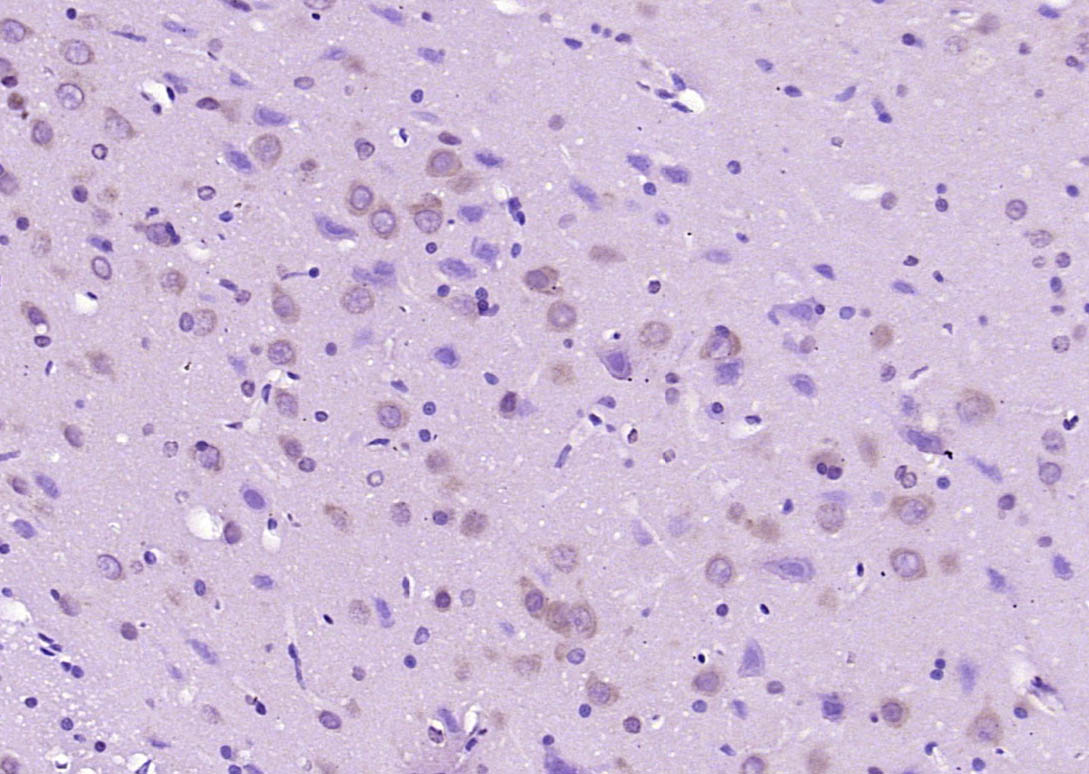
Rabbit Anti-APC10 antibody
ANAPC 10; anapc10; Anaphase promoting complex 10; Anaphase promoting complex subunit 10; Anaphase-promoting complex subunit 10; Apc 10; APC10; APC10_HUMAN; Cyclosome subunit 10; DKFZP564L0562; Doc 1; Doc1; OTTHUMP00000220297; OTTHUMP00000220298; OTTHUMP00
View History [Clear]
Details
Product Name APC10 Chinese Name 细胞周期后期促进蛋白亚基10抗体 Alias ANAPC 10; anapc10; Anaphase promoting complex 10; Anaphase promoting complex subunit 10; Anaphase-promoting complex subunit 10; Apc 10; APC10; APC10_HUMAN; Cyclosome subunit 10; DKFZP564L0562; Doc 1; Doc1; OTTHUMP00000220297; OTTHUMP00000220298; OTTHUMP00000220299; OTTHUMP00000220300; OTTHUMP00000220303. Research Area Cell biology Cyclin Ubiquitin Immunogen Species Rabbit Clonality Polyclonal React Species Rat, (predicted: Human, Mouse, Chicken, Pig, Cow, Rabbit, Sheep, ) Applications WB=1:500-2000 ELISA=1:5000-10000 IHC-P=1:100-500 IHC-F=1:100-500 ICC=1:100-500 IF=1:100-500 (Paraffin sections need antigen repair)
not yet tested in other applications.
optimal dilutions/concentrations should be determined by the end user.Theoretical molecular weight 21kDa Cellular localization The nucleus cytoplasmic Form Liquid Concentration 1mg/ml immunogen KLH conjugated synthetic peptide derived from human APC10: 31-130/185 Lsotype IgG Purification affinity purified by Protein A Buffer Solution 0.01M TBS(pH7.4) with 1% BSA, 0.03% Proclin300 and 50% Glycerol. Storage Shipped at 4℃. Store at -20 °C for one year. Avoid repeated freeze/thaw cycles. Attention This product as supplied is intended for research use only, not for use in human, therapeutic or diagnostic applications. PubMed PubMed Product Detail Composed of more than ten subunits, the anaphase-promoting complex (APC) acts in a cell-cycle dependent manner to promote the separation of sister chromatids during the transition between metaphase and anaphase in mitosis. APC, or cyclosome, accomplishes this progression through the ubiquitination of mitotic cyclins and other regulatory proteins that are targeted for destruction during cell division. APC is phosphorylated, and thus activated, by protein kinases Cdk1/cyclin B and polo-like kinase (Plk). APC is under tight control by a number of regulatory factors, including CDC20, CDH1 and MAD2. Specifically, CDC20 and CDH1 directly bind to and activate the cyclin-ubiquitination activity of APCs. In contrast, MAD2 inhibits APC by forming a ternary complex with CDC20 and APC, thus preventing APC activation. APC10 contains a Doc1 homology domain, which is a beta-sandwich structure common to many other putative E3 ubiquitin ligases. APC10 binds to core APC subunits throughout the cell cycle. Specifically, APC10 binds to the C-terminus of CDC27/APC3. During mitosis, APC10 is localized in centrosomes and mitotic spindles. APC10 also localizes to kinetochores from prophase to anaphase, and to the midbody in telophase and cytokinesis.
Function:
Component of the anaphase promoting complex/cyclosome (APC/C), a cell cycle-regulated E3 ubiquitin ligase that controls progression through mitosis and the G1 phase of the cell cycle. The APC/C complex acts by mediating ubiquitination and subsequent degradation of target proteins: it mainly mediates the formation of 'Lys-11'-linked polyubiquitin chains and, to a lower extent, the formation of 'Lys-48'- and 'Lys-63'-linked polyubiquitin chains.
Subunit:
The APC/C is composed of at least 12 subunits. The C-terminus of APC10 binds to CDC27/APC3.
Similarity:
Belongs to the APC10 family.
Contains 1 DOC domain.
SWISS:
Q9UM13
Gene ID:
10393
Database links:
- Entrez Gene: 10393 Human
- Entrez Gene: 68999 Mouse
- Entrez Gene: 361389 Rat
- Omim: 613745 Human
- SwissProt: Q9UM13 Human
- SwissProt: Q8K2H6 Mouse
- Unigene: 480876 Human
- Unigene: 257445 Mouse
- Unigene: 420790 Mouse
- Unigene: 9619 Rat
Product Picture
Bought notes(bought amounts latest0)
No one bought this product
User Comment(Total0User Comment Num)
- No comment



 +86 571 56623320
+86 571 56623320
 +86 18668110335
+86 18668110335

